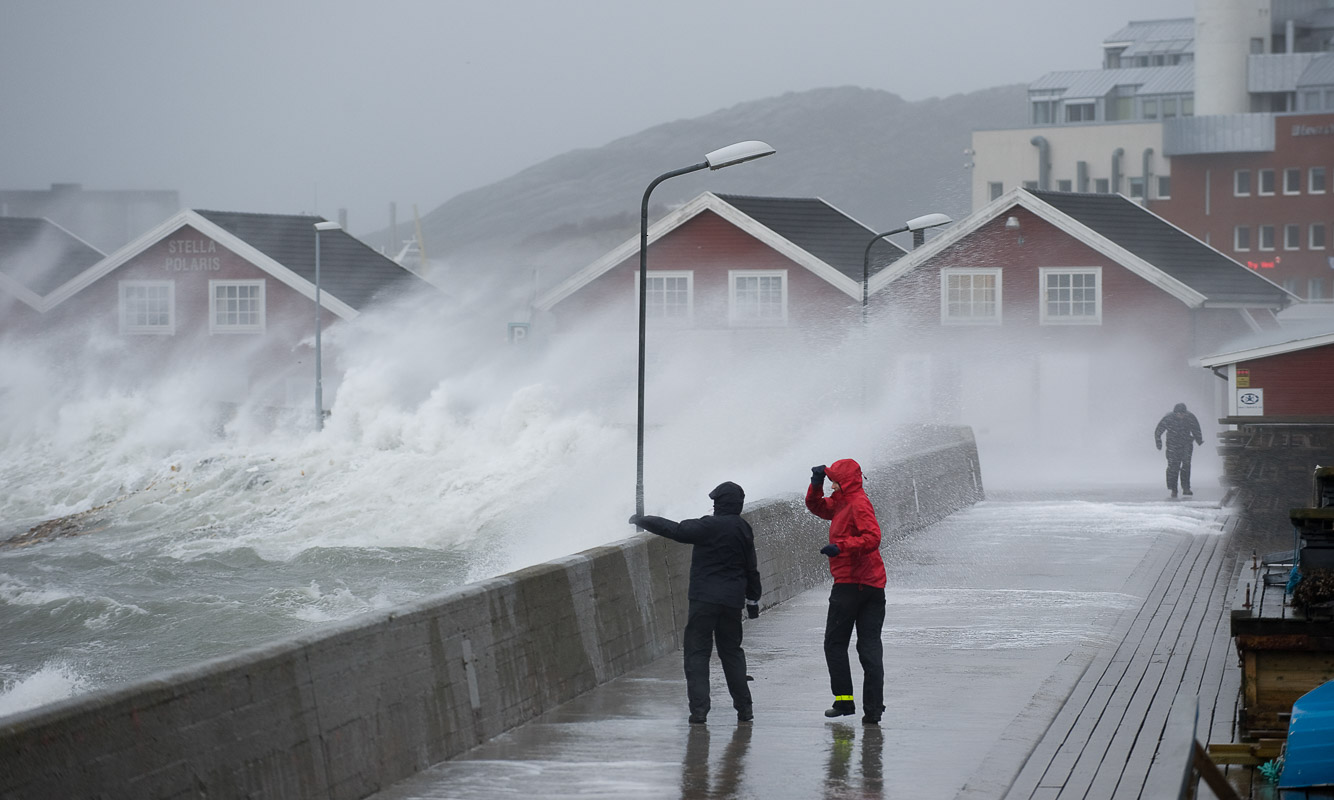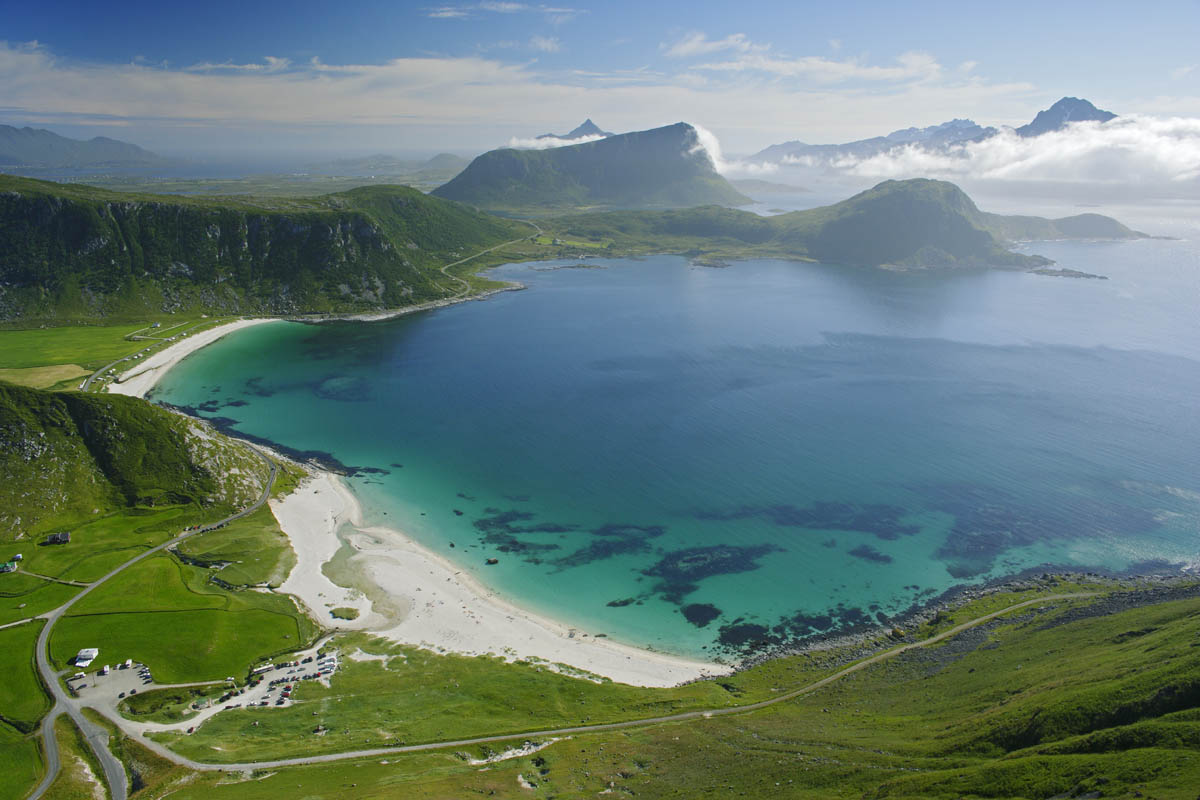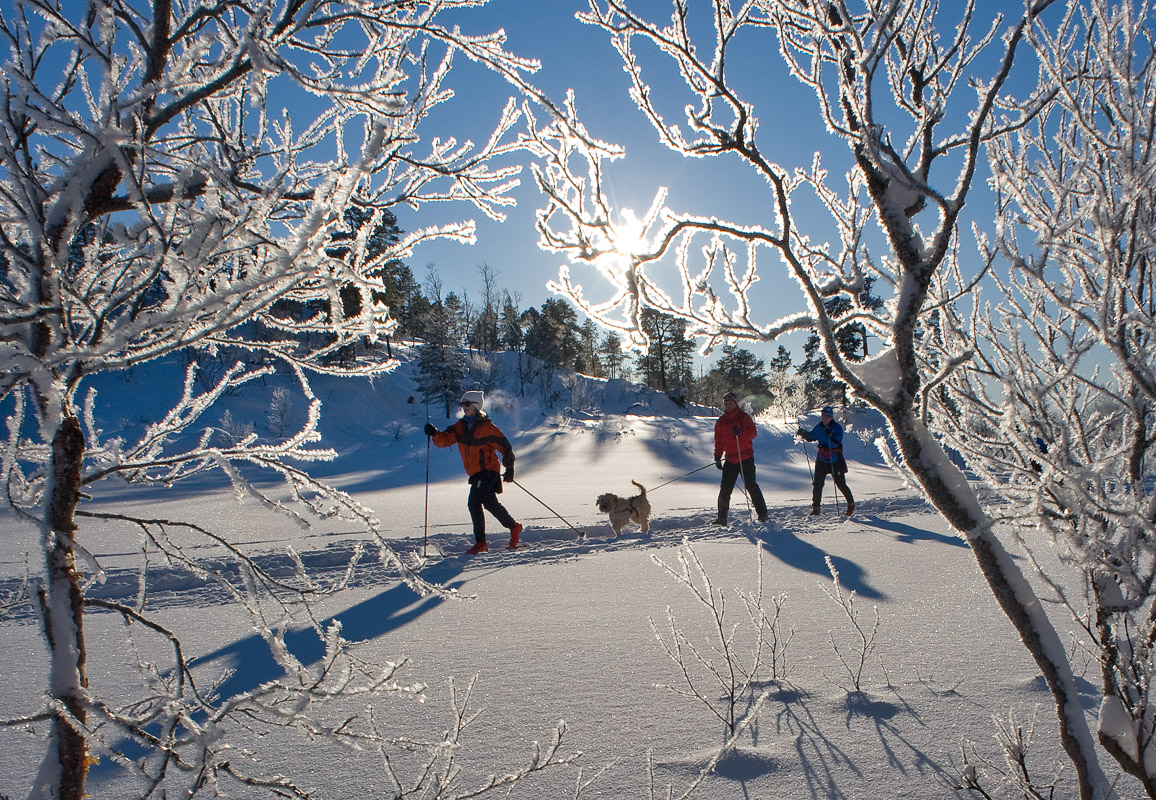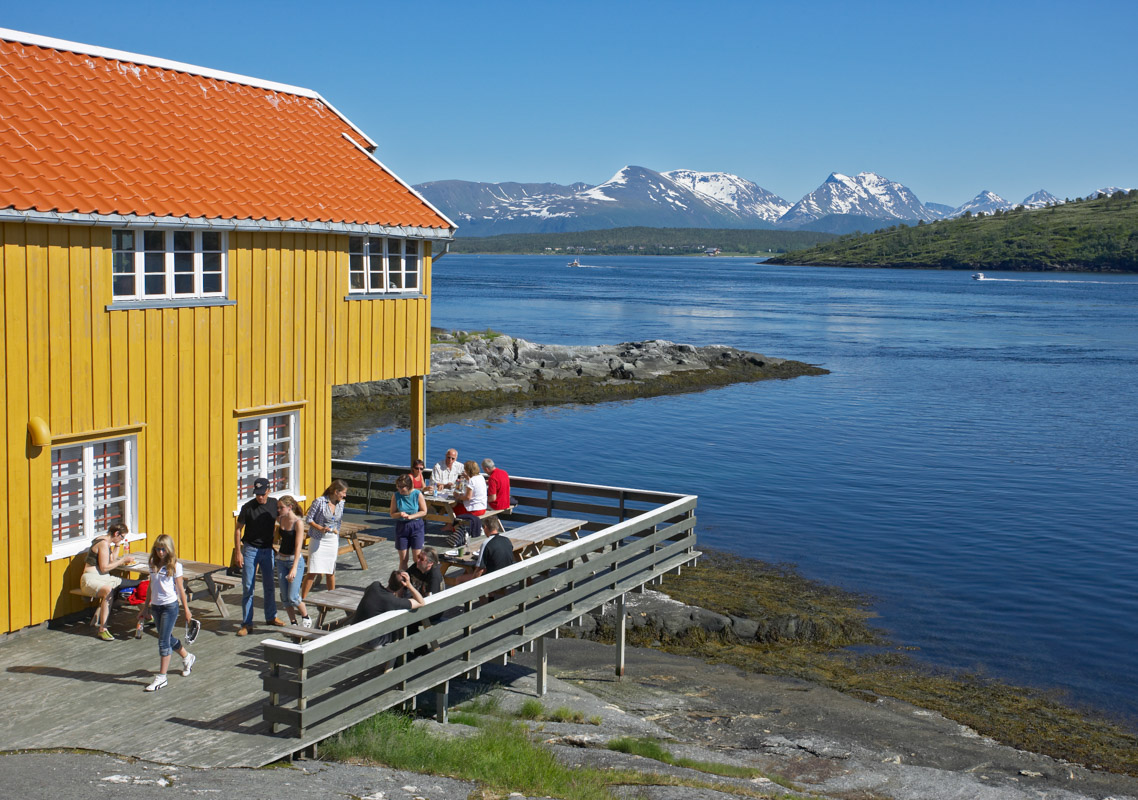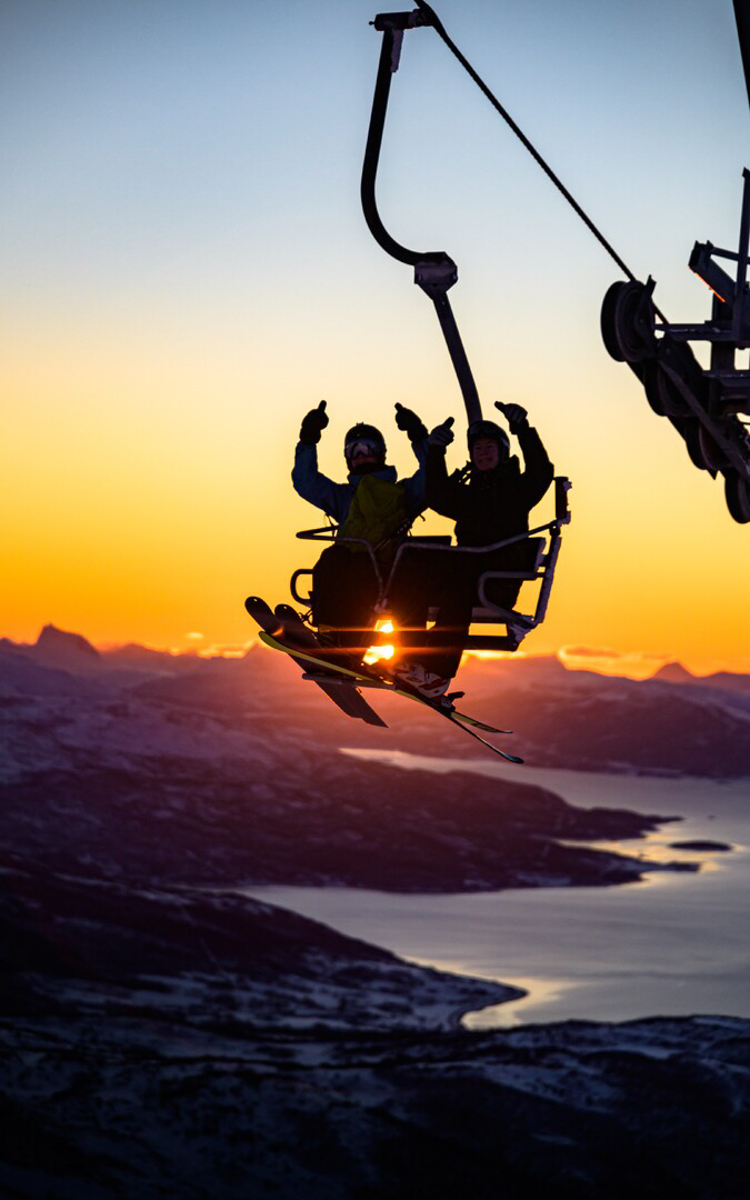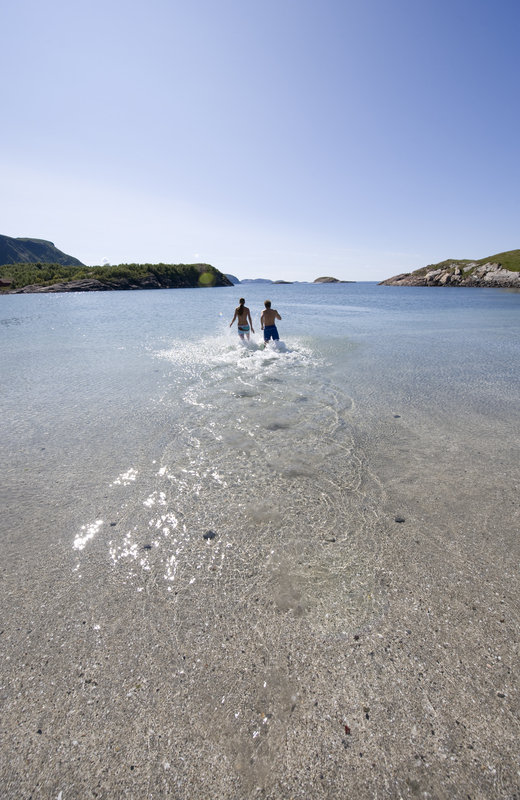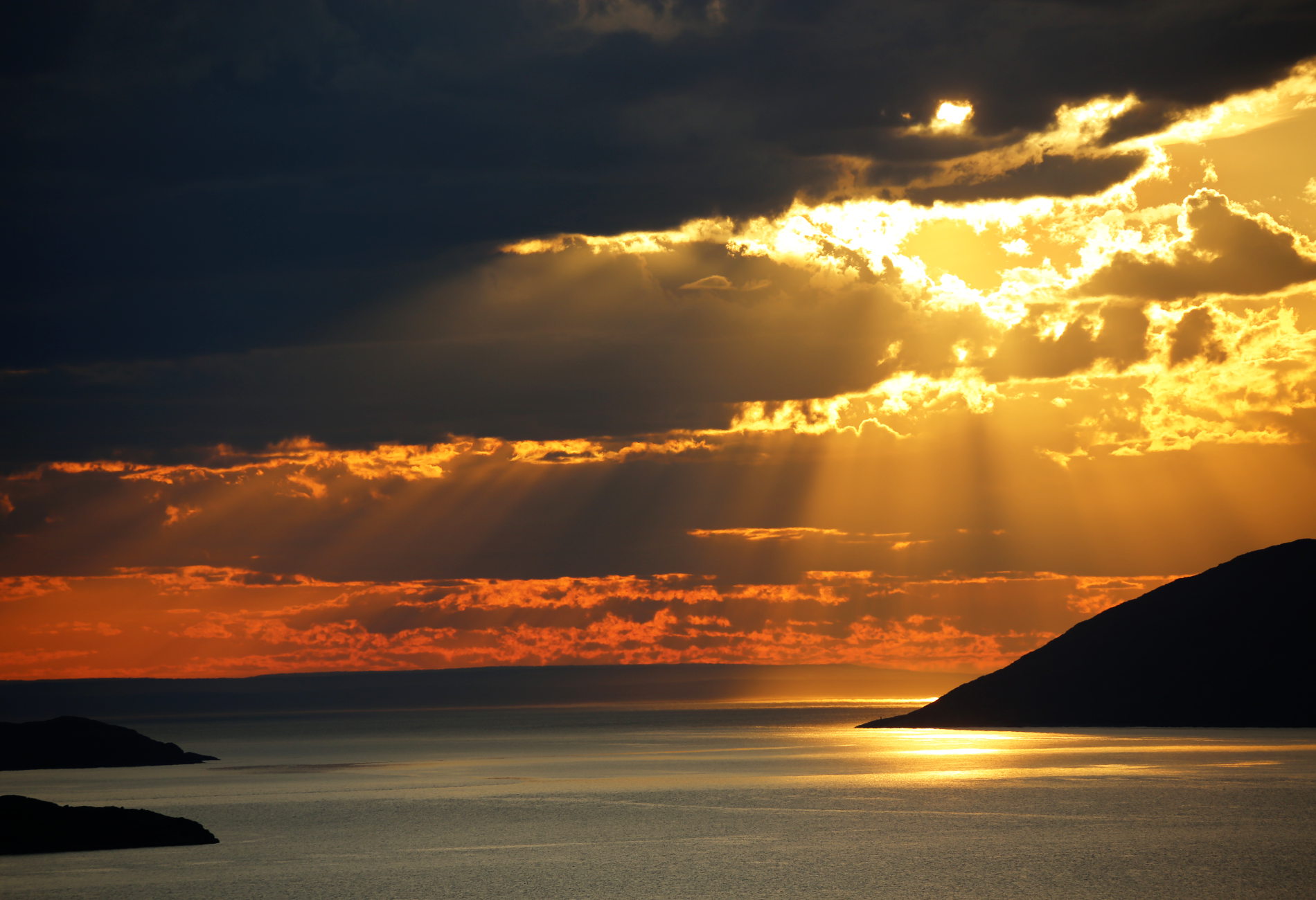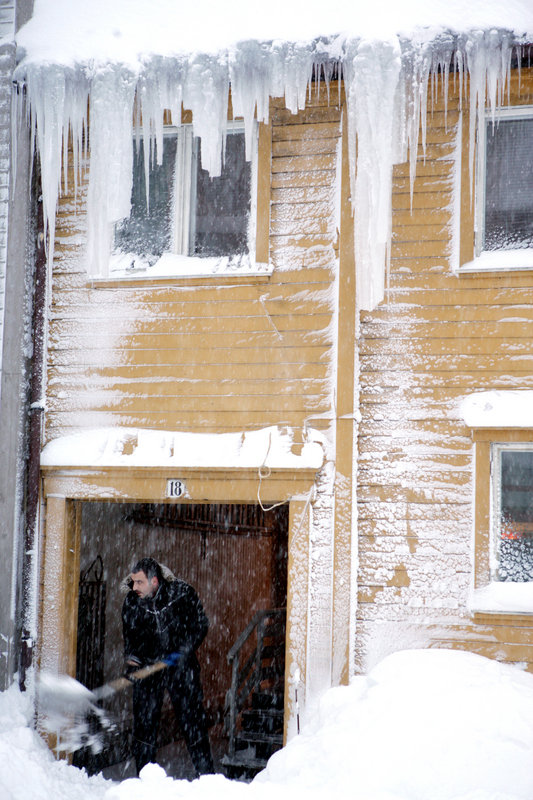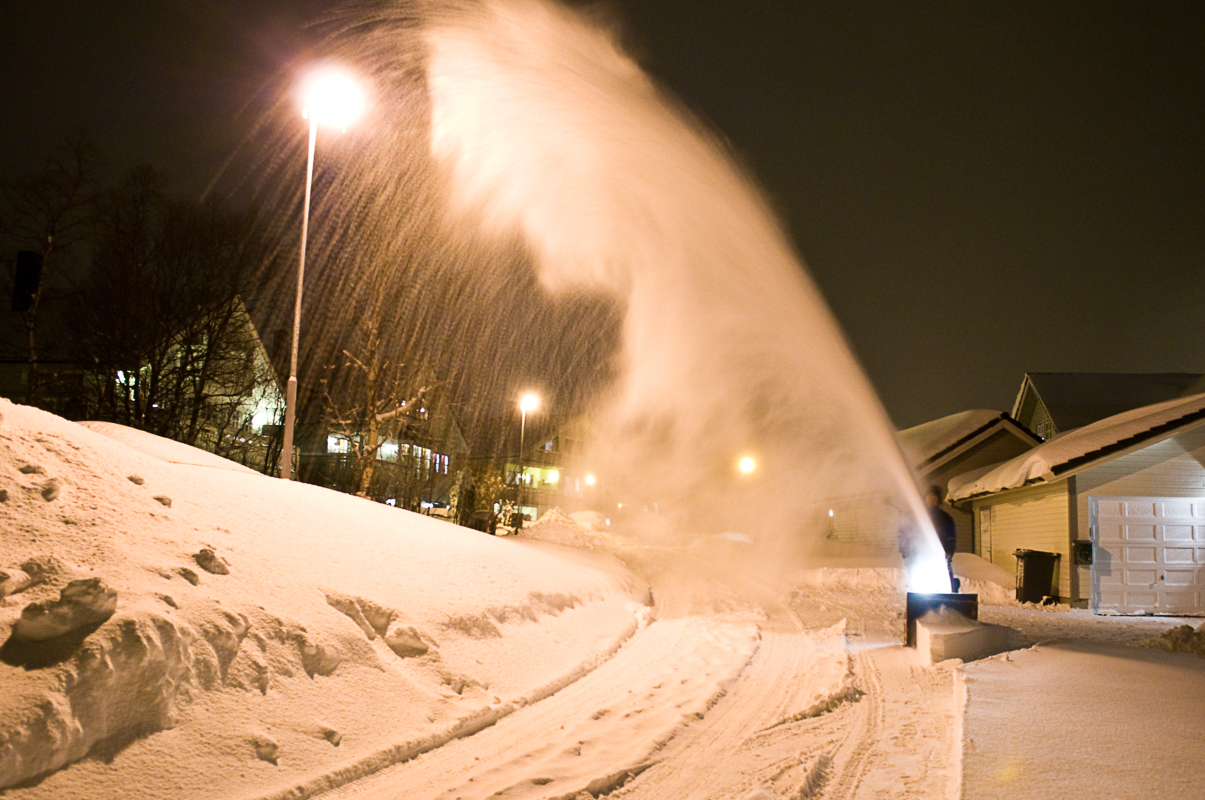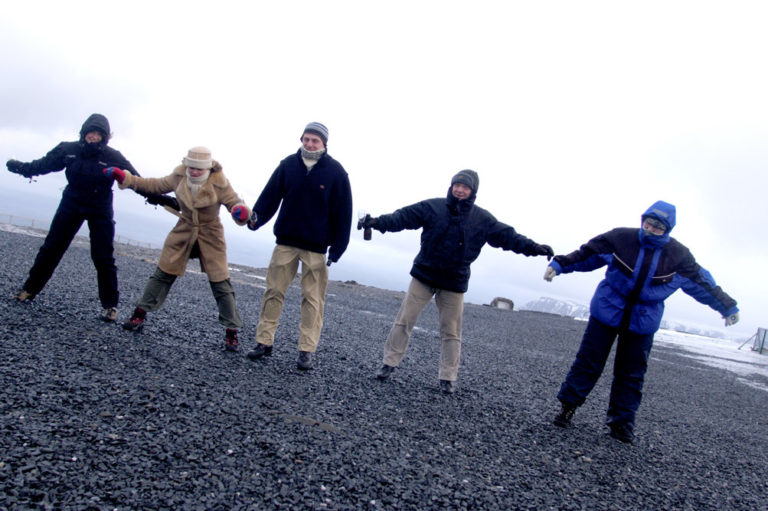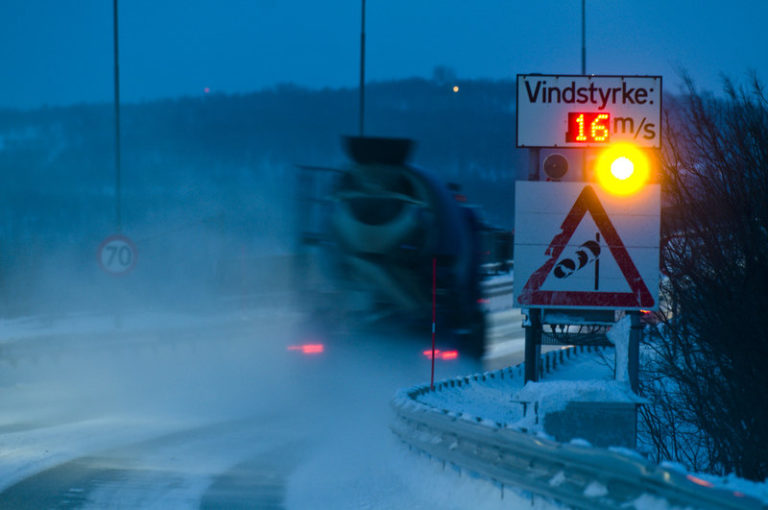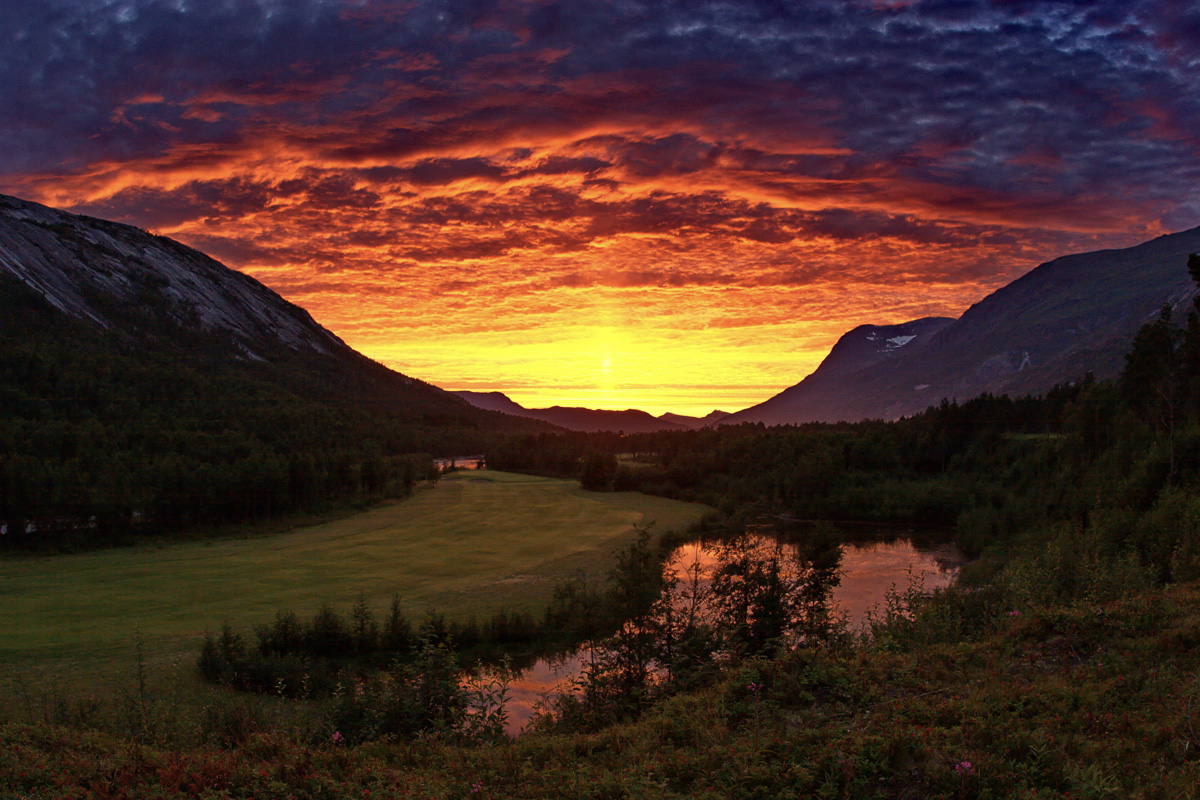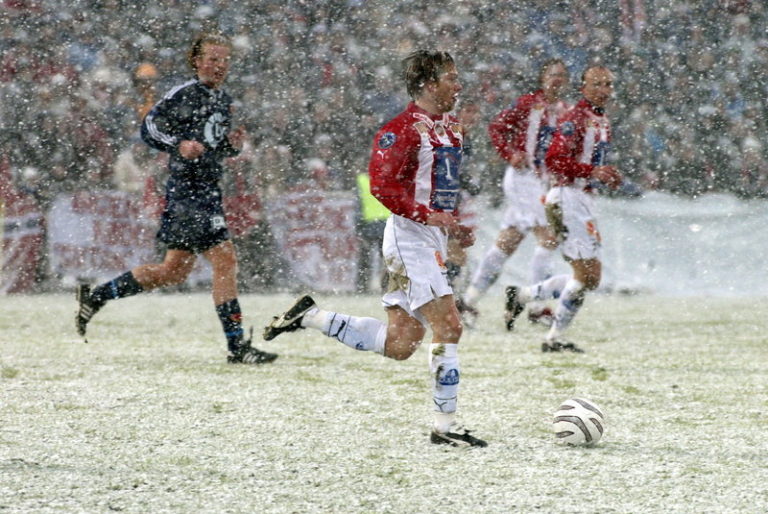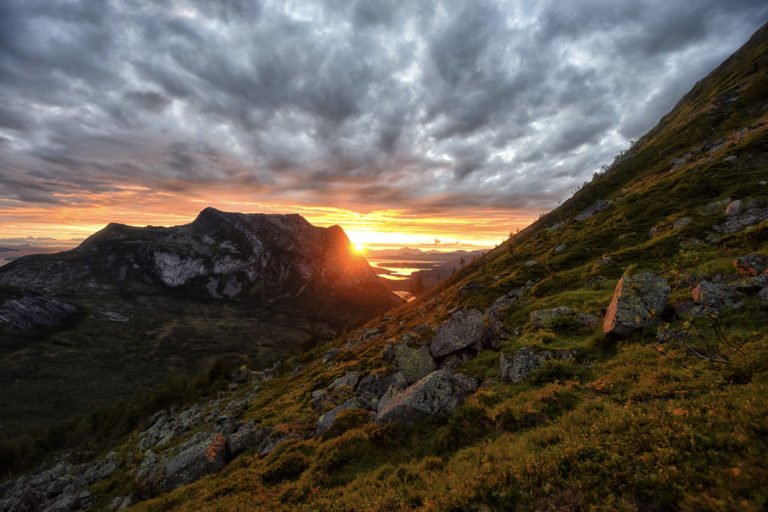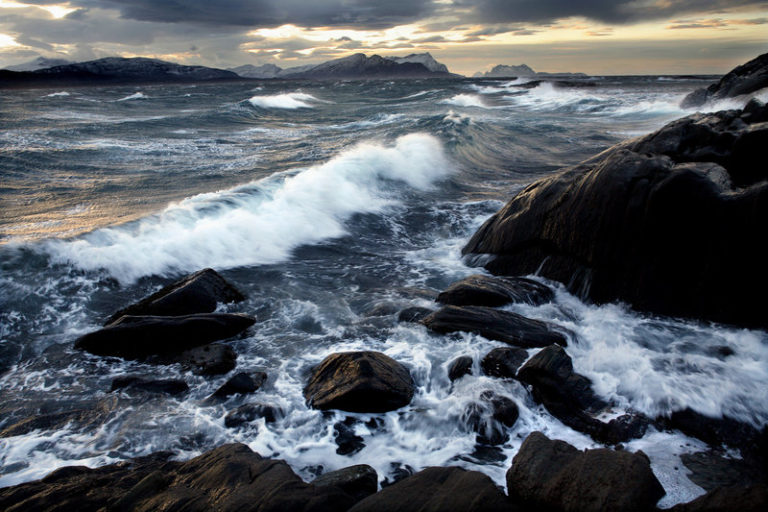Talking about the weather is a serious business in Northern Norway. For a start, we call it “he”, as in “he’s in a bad mood today”. It’s not surprising, since the weather up here is amazingly entertaining and varied. However, what most visitors say is: “It’s not as cold as I thought it would be”.
The mild waters of the Gulf Stream give Northern Norway and Svalbard the mildest climate of anywhere on earth at this latitude. On the island of Værøy, well north of the Arctic Circle, the average temperature doesn’t go below freezing in any month of the year, and there’s no meteorological winter. Even the south-west coast of Svalbard is free of ice all year round.
From Russia with love, southeast winds bring heatwaves to the north
Every now and then, Northern Norway basks in summer heatwaves from the southeast, bringing with them tropical nights and daytime temperatures into the thirties, and the highest temperatures are found in East Finnmark. Milk-bottle-white Northerners on the beach declare to TV cameras, “If it gets much warmer, I’m moving south”. Just as frequent are the north-easterlies, which bring sparklingly clear summer days with temperatures between 12oC and 18oC (54oF – 64oF).
Summer isn’t always warm
When a north-westerly is blowing in mid-July, the temperature drops to 4–5oC (around 40F) on the Finnmark coast, and the mountaintops in Troms get a light dusting of snow. South-westerlies bring mild, very damp weather, especially in the south. For an average summer holiday in Northern Norway, you can expect a little of everything, so pack everything from your swimming costume to a hat and gloves. Sunny pockets inland in places like Mo i Rana, Skibotn and Alta have the highest summer temperatures, while the outer coast gets the freshest and dampest weather.
Autumn brings a mixed bag of weather
Autumn is long and mild in Northern Norway. Autumn storms with women’s names tend to bring lots of rain, while high pressures bring lovely, mild daytime temperatures and bone-chilling night frosts. In the north, it’s not uncommon to wake up to a layer of snow in September, although this never lasts, whereas, along the Helgeland coast, snow sometimes isn’t seen until Christmas.
Winter weather can get stormy
Large stretches of the Nordland coast experience little snow and mild temperatures in winter. A south-westerly storm at the port in Bodø is a sight to behold. However, there is plenty of snow in the fjords at places such as Narvik and Mo i Rana. Cold, damp north-westerly winds sometimes dump huge quantities of snow on the coast of Vesterålen, Troms, and Finnmark. Houses in Hammerfest are evacuated because of the danger of avalanches, and the people of Tromsø shovel snow off their roofs. When the dreaded polar lows sweep in suddenly and unexpectedly from the Arctic Ocean towards the Finnmark coast, the flights are cancelled and the roads get blocked. Then, just as if the weather has just had a tantrum, it’s all over as suddenly as it began.
Inland is where the real cold is
The Finnmark plain is the coldest part of mainland Norway, and the coldest temperature ever recorded in Karasjok is -51oC (-60oF). Inner Troms, the innermost part of Salten and Inner Helgeland also have a typical inland climate with cold winters and stable, fine weather. Because of the dry air, you don’t notice the cold as much, and if you wrap up well, it’s no problem to linger outside, looking for the Northern Lights — which, naturally, are seen most often when the weather is driest.
There is a fast and efficient spring
Spring is the driest, sunniest time of the year. At Saltfjellet mountain, Troms and Finnmark, as well as on Svalbard, the snow is still deep in April, inviting you to ski or go on snowmobile and ice-fishing trips. Along the Nordland coast, on the other hand, it’s time to enjoy a coffee in a sheltered spot in the sun. By May, the spring has put an end to all the skiing in Northern Norway, although you’re still not quite safe from snow showers. Reindeer calving time is at Whitsun, and the newborn reindeer calves often have to learn very quickly about the tough realities of life as it snows yet again.
Let’s discuss the weather
Here is a table of selected locations in Northern Norway, organised from south to north. Coastal areas like Vega, Røst and Vardø are relatively mild in winter and cool in summer. Inland locations like Mosjøen, Bardufoss, Alta and Karasjok are cold in winter, and relatively warm in summer. Weather stations found along the inner sailing route, like Tromsø, Harstad and Bodø are somewhere between. Not that Røst has a winter temperature above freezing, whereas Vardø’s summer temperature never hits
- Vega: 12,5 (July), -0,9(January)
- Mosjøen: 13,0 (Jul), -6,9C/(Jan)
- Bodø 12,5 (Jul), -2,2 (Jan)
- Røst: 10,7 (Jul), 1,1 (January/February)
- Harstad: 12,3 (Jul), -2,8 (Jan)
- Bardufoss: 13,0 (Jul), -10,4 (Feb)
- Tromsø: 11,8 (Jul), -4,.4 (Jan)
- Alta: 13,4 (Jul), -8,7 (Jan)
- Karasjok: 13,1 (Jul), -17,1 (Jan)
- Vardø: 9,2 (Jan), -5,4 (Feb)
- Longyearbyen: 5,9 (Jul), -16,2 (Feb)
Weather extremes in Northern Norway
The records for the hottest temperature and the coldest temperature were both set on the Finnmark plain, while Upper Saltdal at the Arctic Circle had the hottest summer. Røst, in the middle of the Gulf Stream, had the mildest ever winter. On Lurøy in Helgeland, three metres (nine feet) of rain fell in one year, while Dividal in Inner Troms has a dry, steppe-like climate. The temperature has occasionally crept above 20oC (68oF) on Svalbard!
- Cold record: Karasjok -51.4/60.5F
- Heat record: Sič’čajav’ri 34.3/93.7F
- Highest January average: Røst 1.1C/34F
- Lowest January average: Karasjok -17.1 F/-1.2F
- Highest July average: Øvre Saltdal 13.8/56.8
- Lowest July average: Kleptovfjellet 8C/46.4
- Driest location: Dividal 282 mm/11,1 in per year
- Wettest location: Lurøy 2935 mm/115.5 in per year
- Cold record Svalbard: Green Harbour -49.4/56.9F
- Heat record Svalbard: Svalbard’s airport 21.3 C/70.3F
